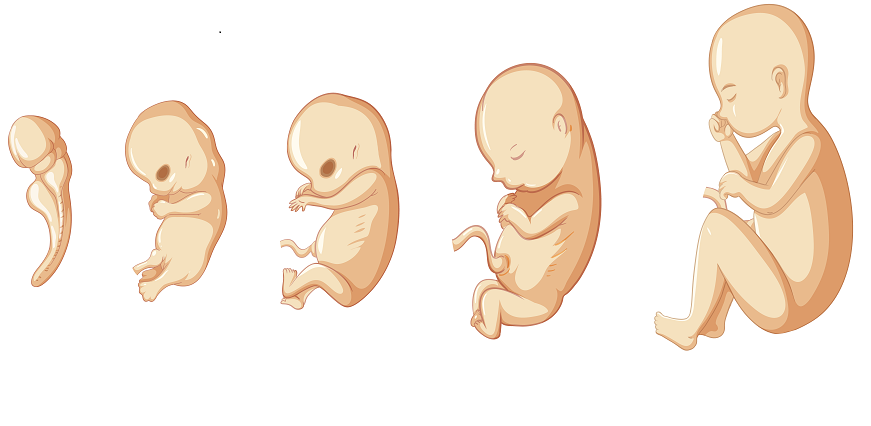The fetal weight chart is a tool that can be used to help estimate the weight of a fetus during pregnancy. The chart is based on data from a large number of pregnancies, and includes information on average fetal weights at different gestational ages. As an expecting parent, one of the things you’ll want to keep track of is your baby’s growth. By tracking your baby’s weight over time, you can get a better sense of their development and how they’re growing. While there are many different scales available to monitor this, one of the most common ways to measure a baby’s weight is with a fetal weight chart in grams. In this blog post, we will discuss what a fetal weight chart in grams is, why it’s important, and why it may be beneficial to use one when tracking your baby’s growth. We will also provide some tips on how to read and interpret the fetal weight chart in grams so that you have all the information you need to make sure your little one is healthy and happy.
How to read a Fetal Weight Chart
When you are trying to determine the weight of your baby, you will need to use a fetal weight chart. This chart can be found online or in most pregnancy books. To read the chart, you will need to know the date of your last menstrual period (LMP) and your current gestational age.
Once you have this information, locate your LMP on the left side of the chart and find your gestational age along the top. Then, follow these two lines until they intersect on the chart. The number where they meet is your baby's estimated weight in grams.
Keep in mind that this is just an estimate. Your baby may be larger or smaller than the estimate depending on a variety of factors. If you are concerned about your baby's size, talk to your doctor or midwife.
What is the Average Fetal Weight by week?
The average fetal weight by week can vary depending on a number of factors. However, according to the website Kids Health, the average weight of a full-term baby is about 3.2 kg.
Premature babies tend to weigh less than full-term babies, and they may also have a lower birth weight. For example, a premature baby born at 34 weeks may only weigh 1.8 to 2.3 kg.
There are many different charts that show the average fetal weights by week, but it's important to remember that every baby is different and will grow at their own pace. If you're concerned about your baby's growth, talk to your healthcare provider.
| Gestational age | Length (inches) | Weight (in Kg) | Length (cm) | Mass (g) |
| (head to bottom) | (head to bottom) | |||
| 8 weeks | 0.62 inches | 0.020 | 1.57 cm | 20 grams |
| 9 weeks | 0.91 inches | 0.027 | 2.30 cm | 27 grams |
| 10 weeks | 1.22 inch | 0.035 | 3.1 cm | 35 grams |
| 11 weeks | 1.61 inch | 0.045 | 4.1 cm | 45 grams |
| 12 weeks | 2.13 inches | 0.058 | 5.4 cm | 58 grams |
| 13 weeks | 2.64 inches | 0.073 | 6.7 cm | 73 grams |
| (head to toe) | (head to toe) | |||
| 14 weeks | 5.79 inches | 0.093 | 14.7cm | 93 grams |
| 15 weeks | 6.57 inches | 0.117 | 16.7 cm | 117 grams |
| 16 weeks | 7.32 inches | 0.146 | 18.6 cm | 146 grams |
| 17 weeks | 8.03 inches | 0.181 | 20.4 cm | 181 grams |
| 18 weeks | 8.74 inches | 0.223 | 22.2 cm | 223 grams |
| 19 weeks | 9.45 inches | 0.273 | 24.0 cm | 273 grams |
| 20 weeks | 10.12 inches | 0.331 | 25.7 cm | 331 grams |
| 21 weeks | 10.79 inches | 0.399 | 27.4 cm | 399 grams |
| 22 weeks | 11.42 inches | 0.476 | 29.0 cm | 478 grams |
| 23 weeks | 12.05 inches | 0.567 | 30.6 cm | 568 grams |
| 24 weeks | 12.68 inches | 0.671 | 32.2 cm | 670 grams |
| 25 weeks | 13.27 inches | 0.785 | 33.7 cm | 785 grams |
| 26 weeks | 13.82 inches | 0.912 | 35.1 cm | 913 grams |
| 27 weeks | 14.41 inches | 1.057 | 36.6 cm | 1055 grams |
| 28 weeks | 14.80 inches | 1.211 | 37.6 cm | 1210 grams |
| 29 weeks | 15.47 inches | 1.379 | 39.3 cm | 1379 grams |
| 30 weeks | 15.95 inches | 1.560 | 40.5 cm | 1559 grams |
| 31 weeks | 16.46 inches | 1.751 | 41.8 cm | 1751 grams |
| 32 weeks | 16.93 inches | 1.950 | 43.0 cm | 1953 grams |
| 33 weeks | 17.36 inches | 2.164 | 44.1 cm | 2162 grams |
| 34 weeks | 17.84 inches | 2.377 | 45.3 cm | 2377 grams |
| 35 weeks | 18.23 inches | 2.595 | 46.3 cm | 2595 grams |
| 36 weeks | 18.62 inches | 2.812 | 47.3 cm | 2813 grams |
| 37 weeks | 19.02 inches | 3.030 | 48.3 cm | 3028 grams |
| 38 weeks | 19.41 inches | 3.234 | 49.3 cm | 3236 grams |
| 39 weeks | 19.72 inches | 3.434 | 50.1 cm | 3435 grams |
| 40 weeks | 20.08 inches | 3.620 | 51.0 cm | 3619 grams |
| 41 weeks | 20.39 inches | 3.787 | 51.8 cm | 3787 grams |
How to use a fetal weight chart to predict your baby's birth weight
A fetal weight chart is a tool that can be used to predict your baby's birth weight. This can be helpful information for you and your healthcare provider. To use a fetal weight chart, you will need to know the date of your last menstrual period (LMP) and the number of weeks pregnant you are. Once you have this information, you can find your baby's estimated weight on the chart.
"Suggested Read:" A complete diet chart for pregnant women
If you are unsure of your LMP or how many weeks pregnant you are, your healthcare provider can help you determine this information. It is important to note that the fetal weight chart is only an estimate. Your baby may weigh more or less than what is predicted on the chart.
If you have any concerns about your baby's growth, be sure to discuss them with your healthcare provider.
Conclusion
Fetal weight charts in grams can be a useful tool for assessing the health of your baby and tracking its growth throughout pregnancy. While these charts may not always provide an exact measurement, they are still helpful in determining whether or not your baby is growing at a healthy rate. Many hospitals will use this chart to monitor fetal development during check-ups, but you can also refer to it when you have any questions about the size and weight of your baby.













 7982100200
7982100200
























 To reach our help desk call 9213188888
To reach our help desk call 9213188888.png)
Comments
32 week are my pregnancy but baby weight is 1664